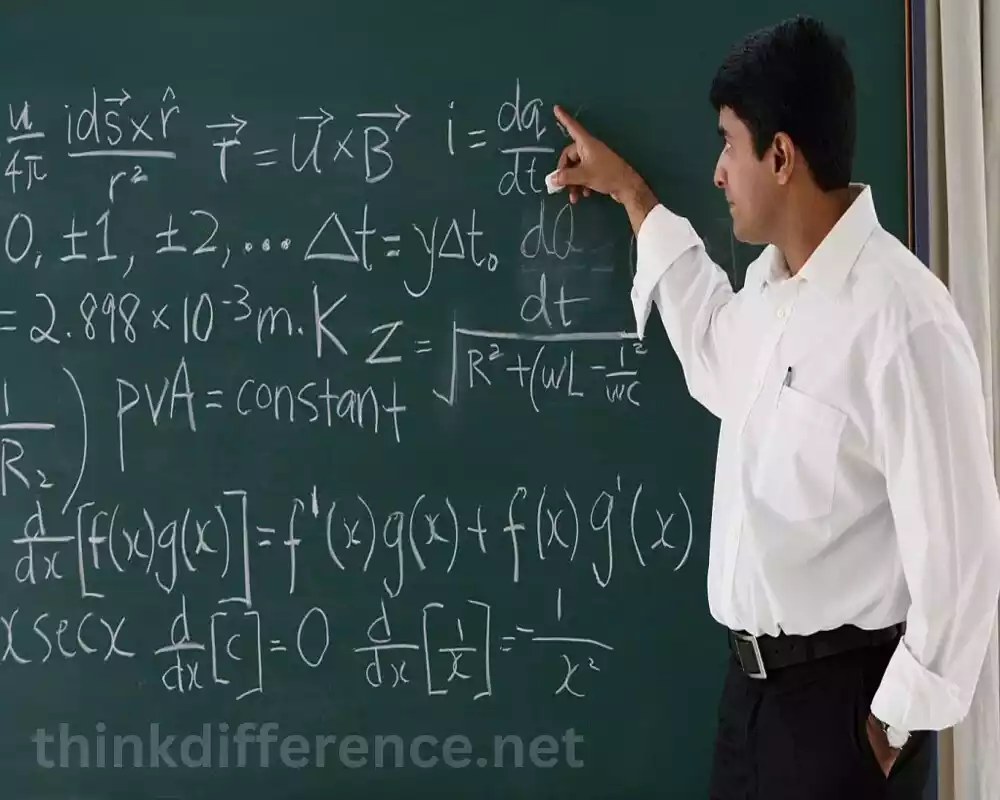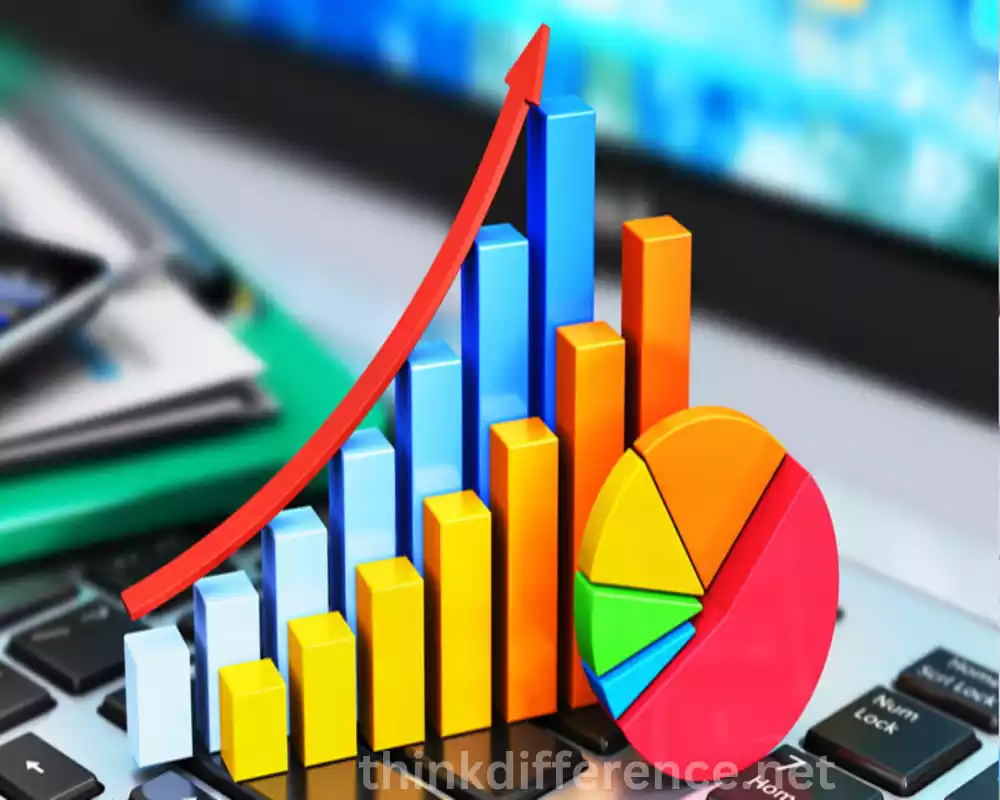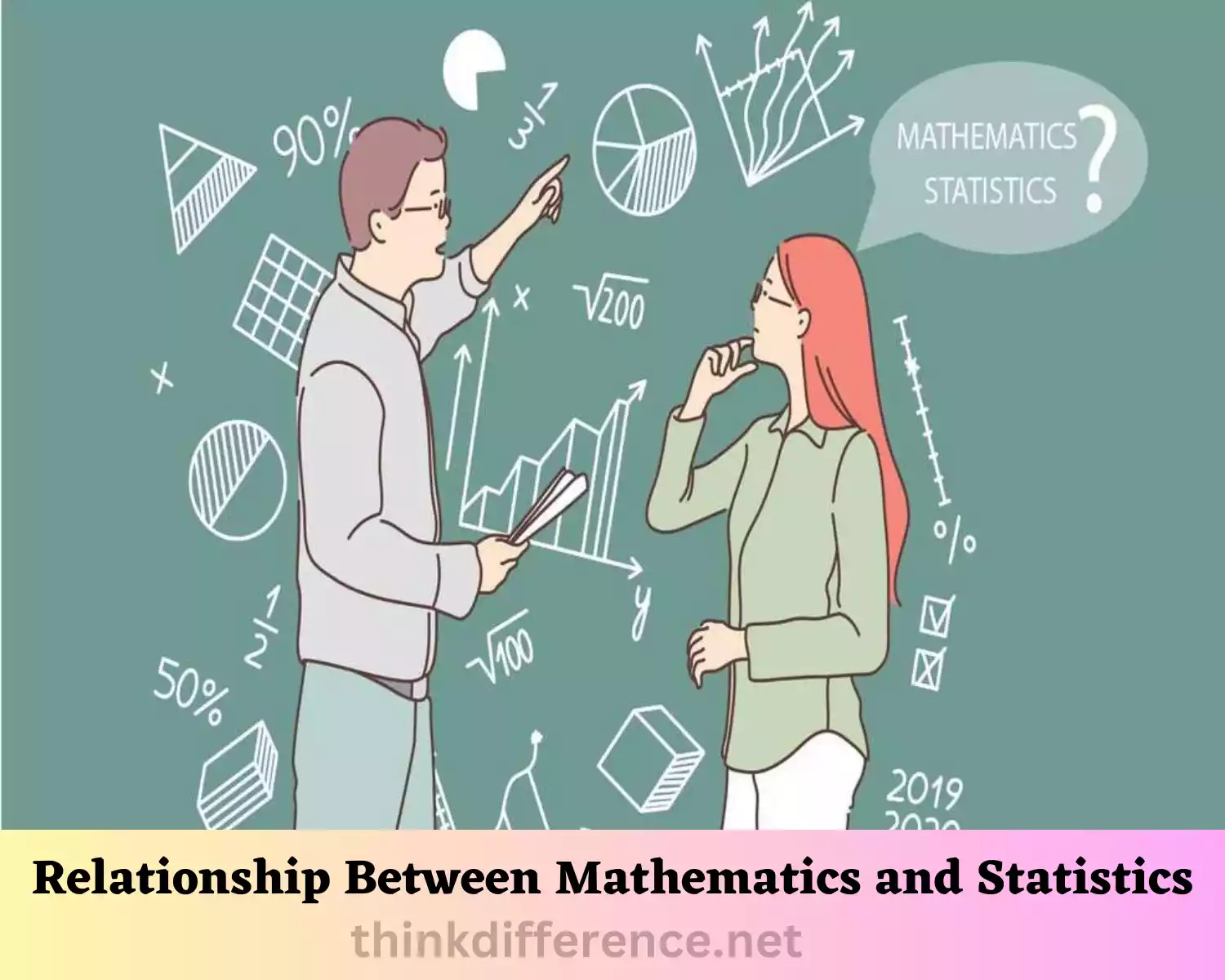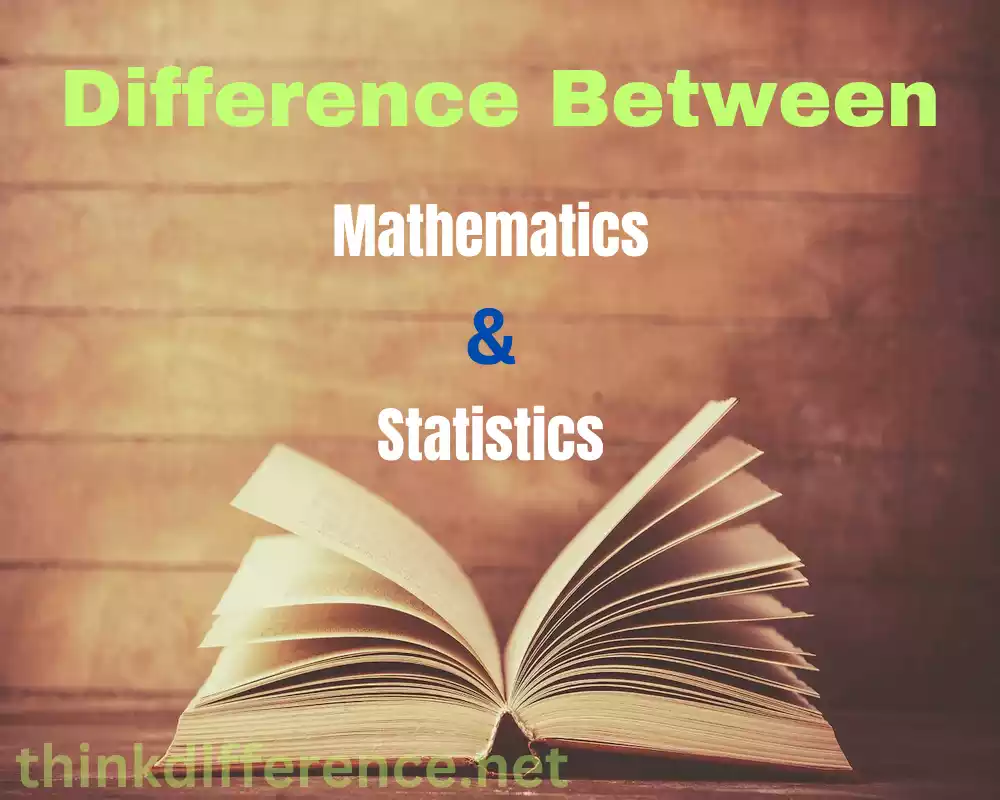Mathematics and Statistics play an integral part of modern study as well as everyday life, providing the framework necessary for interpreting information, solving problems and making educated decisions. We will look at both subjects here their significance in decision-making processes as well as research.
What is Mathematics?
Mathematics is the study of patterns, characteristics and relations among numbers, amounts shapes and patterns. It can also be described as an abstract language which serves as a platform for precise reasoning and problem-solving.

Mathematics is a broad discipline which encompasses several subfields and branches such as algebra, number theory, calculus and geometry – each investigating various elements and applications related to mathematic concepts.
Mathematics is the study and application of symbols, formulae, equations and logical rules to explore abstract relationships and objects, providing tools that support quantitative reasoning and measurement as well as modeling and prediction across numerous fields and in real world scenarios.
Key characteristics of mathematics include:
- Rigor: Mathematics requires clear definitions, axioms and logical reasoning to establish the validity of statements and proofs.
- Abstraction: Mathematics abstracts real-world phenomena into general concepts and symbols, allowing for a deeper understanding and analysis.
- Precision: Mathematics strives for exactness and precision in its language and reasoning, enabling precise calculations and deductions.
- Universality: Mathematics is a universal language, applicable across cultures and disciplines, with principles and concepts that transcend specific contexts.
Mathematics is more than an independent field of study. Economics serves as the cornerstone for other fields such as economics, physics, engineering and computer science. Math plays an essential part in research & development projects as well as problem solving & reasoning tasks.
What is Statistics?
Statistics is an academic discipline focused on collecting, analyzing, interpreting presenting and managing data sets to make educated decisions in drawing conclusions and forecasting specific phenomena or groups of groups or phenomena. It specializes in extracting insights that provide relevant knowledge in order to draw accurate predictions or draw educated conclusions for specific events or phenomena.

Key aspects of statistics include:
- Data Collection: Statistics involves collecting data via different means like surveys, experiments or observations; such data could include categorical or numerical forms as well as both types simultaneously.
- Descriptive Statistics: Descriptive statistics is the practice of summarizing and describing key features of data in order to better understand it. It encompasses measures like averages (mean median mean and mode), variation (range standard deviation range and standard deviation variance), as well as graphic representations such as histograms or pie charts etc.).
- Inferential Statistics: Inferential statistical techniques utilize sample data in order to draw inferences or predictions for an entire population based on this sample data. Tests of hypothesis as well as confidence intervals and statistical models help in this endeavor by creating connections, comparing groups, assessing results’ significance, or making forecasts about what could happen next.
- Probability Theory: Probability theory is an integral component of statistics that calculates probabilities associated with future events occurring and allows individuals to make predictions based on this knowledge or its estimated values.
- Statistical Models: statistical models are mathematical representations used to explain relationships among variables as well as observed data, providing a basis for making predictions and drawing inferences based on available evidence.
- Statistical Software: Statisticians use various languages and tools specialized for data analysis, modeling and visualization – such as R, Python or SPSS – that enable detailed investigation.
Statistics is used in numerous fields such as economics, sociology, health care, business studies and environmental sciences to make better informed decisions and formulate policies, track market trends and analyze risks effectively for evidence-based practice.
Statistics provides invaluable data that assists decision-making by offering insight into making sound choices about quality control measures such as testing or quality inspection of products on sale at retail establishments or to assess market risks more closely than before.
Statistics is an objective and systematic way of gathering, understanding and interpreting data, which allows researchers, analysts and decision-makers to draw useful insights and draw logical inferences based on empirical evidence.
Importance of understanding the difference between Mathematics and Statistics
Understanding the difference between mathematics and statistics is of vital importance for various reasons:
- Clarity of Concepts: Recognizing the distinction between Mathematics and Statistics helps in developing a clear understanding of each discipline’s scope, focus and methodologies. It prevents confusion and ensures accurate usage of terms, concepts and techniques specific to each field.
- Effective Communication: Being able to articulate the differences between Mathematics and Statistics allows for effective communication among professionals in related fields. Collaboration, problem-solving and interdisciplinarity research all become easier through creating an understanding of all roles played in research process and their corresponding responsibilities and contributions.
- Choosing the Right Approach: Understanding the differences between Mathematics and Statistics enables individuals to select the appropriate approach when tackling specific problems or inquiries. It helps determine whether a problem requires a mathematical framework for theoretical analysis or statistical tools for data-driven investigation.
- Career Guidance: Awareness of the distinctions between Mathematics and Statistics aids in career planning and decision-making. Allows individuals to identify opportunities that align with their talents, interests and objectives. For example, individuals inclined towards abstract reasoning and theoretical analysis may find Mathematics more suitable, while those interested in data analysis and decision-making may lean towards Statistics.
- Skill Development: Recognizing the differences between Mathematics and Statistics can guide individuals in developing the specific skills and knowledge required for each discipline. It helps in identifying areas for further study and training, enabling individuals to acquire the appropriate tools and techniques necessary for success in their chosen field.
- Interdisciplinary Applications: Many disciplines, such as data science, machine learning and economics, rely on the integration of Mathematics and Statistics. Understanding their distinctions facilitates effective collaboration and integration of methodologies, contributing to advancements in these interdisciplinary fields.
- Effective Problem-Solving: Differentiating between Mathematics and Statistics enhances problem-solving abilities by enabling individuals to select the most appropriate approach for a given problem. This understanding allows for the application of the right analytical tools, ensuring accurate analysis, interpretation and solution generation.
Comprehending the difference between Mathematics and Statistics is essential for fostering clarity, effective communication, and accurate problem-solving in various domains. It facilitates informed decision-making, supports career development and enables the utilization of the appropriate tools and methodologies for specific inquiries and challenges.
Differences Between Mathematics and Statistics
Mathematics and Statistics can differ significantly:
1. Scope and Focus:
- Mathematics: Mathematics deals with abstract concepts, structures, and relationships. It focuses on the study of numbers, quantities, shapes and logical reasoning. Mathematics is concerned with the development and understanding of theoretical principles and mathematical proofs.
- Statistics: Statistics deals with the collection, analysis, interpretation and presentation of data. It focuses on real-world observations and variability. Statistics is concerned with extracting meaningful information from data, making inferences and drawing conclusions about populations or phenomena.
2. Problem-Solving Approaches:
- Mathematics: Mathematics emphasizes finding exact solutions to problems and proving theorems. It often involves precise calculations, logical reasoning and deductive thinking. Mathematics seeks to provide definitive answers using established rules and principles.
- Statistics: Statistics deals with uncertainty and variation. It addresses problems where there may be incomplete or imperfect information. It employs probabilistic reasoning, hypothesis testing and estimation techniques to draw conclusions and make predictions based on observed data.
3. Tools and Techniques:
- Mathematics: Mathematics employs mathematical operations, formulas, equations and symbols to represent and manipulate abstract concepts. It uses mathematical structures and methods such as algebraic manipulation, calculus and geometric proofs.
- Statistics: Statistics utilizes statistical models, probability distributions, sampling techniques and data analysis methods. As well as covering statistical descriptive data (for instance measurements that measure central tendency or variance) this course also introduces inferential statistics like test of hypotheses and regression methods.
4. Applications:
- Mathematics: Mathematics can be found across many disciplines such as engineering and physics as well as cryptography and computer science, providing the basis for quantitative reasoning and problem solving within these fields.
- Statistics: Statistics can be found across many disciplines including economics, sociology and public health, market research, business analytics and quality management. They help people make more informed decisions by providing data to identify patterns or understand complex systems more thoroughly.
5. Nature of Data:
- Mathematics: Mathematics primarily deals with abstract and idealized concepts. It does not depend on specific data sets or empirical observations.
- Statistics: Statistics relies on real-world data. Data science involves collecting, analyzing and interpreting information pertaining to larger populations to gain new insights or make inferences from them.
Despite these differences, Mathematics and Statistics are closely related and often complement each other. Statistics relies on mathematical principles and techniques, while Mathematics provides the theoretical foundation for statistical theory. Both disciplines play essential roles in problem-solving, quantitative analysis and advancing knowledge in various fields.
Relationship Between Mathematics and Statistics
The relationship between Mathematics and Statistics is intertwined and complementary. While they are distinct disciplines, they share a close connection and often rely on each other for their development and application.

Here are key aspects of their relationship:
- Mathematical Foundation: Mathematics provides the theoretical foundation for statistical theory and methods. Statistical concepts, models and techniques are often built upon mathematical principles and frameworks. Mathematics concepts such as calculus, probability theory and linear algebra play an essential part in understanding and managing statistical concepts.
- Statistical Applications: Statistics applies mathematical tools and techniques to analyze and interpret data. It uses mathematical models, probability distributions and statistical inference to make sense of empirical observations and draw valid conclusions. Statistics takes mathematics beyond simple calculations to explore data analysis and make informed decisions.
- Data Analysis: Mathematics provides the tools and methods for analyzing and manipulating data. Statistical analysis involves mathematical operations, such as calculating averages, measuring variability and performing regression analyses. Mathematics helps to develop the algorithms and computational techniques used in statistical analysis.
- Quantitative Reasoning: Both Mathematics and Statistics promote quantitative reasoning skills. Mathematics cultivates both logical thinking skills as well as problem-solving capabilities, along with abstract conceptualization capabilities. Statistics develop critical thinking abilities along with enabling individuals to interpret data to make intelligent decisions based on it.
- Interdisciplinary Collaboration: Mathematics and Statistics often collaborate with each other and with other disciplines. Machine learning, data science and quantitative finance are inter-disciplinary fields which occupy much of their research time and attention. Mathematics provides the theoretical frameworks and optimization techniques, while Statistics brings the tools for analyzing and modeling complex data.
- Research Methodology: Statistics plays a vital role in research methodology across various disciplines. It helps design experiments, develop sampling techniques and analyze research data. Mathematics assists in modeling and simulating complex systems, providing a mathematical understanding of phenomena.
- Future Developments: The interplay between Mathematics and Statistics continues to evolve. Advances in Mathematics contribute to new statistical methodologies, while emerging statistical techniques inspire new mathematical developments. Synergies among professionals working on massive data analyses, machine learning and AI can lead to breakthroughs.
Mathematics and Statistics have a symbiotic relationship. Mathematics provides the foundation and tools for statistical theory, while Statistics applies mathematical principles to analyze and interpret data. Their collaboration fosters advancements in both fields and enables their practical application in various disciplines.
Mathematics and Statistics in Education
Mathematics and Statistics play vital roles in education at various levels.
Here are some key aspects of their importance:
- Fundamental Skills: Mathematics provides the basis for logic and critical thinking as well as problem-solving abilities, aiding students in honing analytical abilities to spot patterns, resolve them systematically while thinking through problems systematically. Statistics also helps develop students’ comprehension and interpretation of real world data sets.
- Quantitative and Numeracy Skills: Mathematics education provides students with fundamental numeracy skills necessary for working effectively with numbers. Pupils learn how to calculate to estimate quantities accurately as well as make well-informed decisions using numbers alone. Statistics education strengthens pupils’ capacity for comprehending data critically as well as cultivating statistical literacy and data-driven decision making skills.
- Training in STEM Fields: Mathematics is an indispensable aspect of science, technology, engineering and mathematics (STEM) disciplines such as engineering. It forms the basis of many fields like physics computers computer science economics while statistics is becoming an ever-increasingly integral component in bioinformatics data science sociology as understanding data analysis becomes crucial in their work.
- Real World Applications: Math and Statistics Education provides students with an introduction to real-world applications of mathematical concepts and statistical techniques found across numerous fields such as engineering, finance, business and social science – helping students appreciate how these fields apply in practice. Students gain an appreciation of this practical aspect.
- Critical Thinking and Data Literacy: Statistics education fosters data literacy by equipping students to read, understand and convey information efficiently. Students gain skills necessary for making educated decisions based on facts. Such an ability is indispensable in today’s data-rich environment where its ability is crucial.
- Research Process, Experimental Design: Mathematics and statistics play an integral part in research methods. Understanding their purpose helps students grasp research designs as well as data collection, analysis and interpretation. They will then be more capable of conducting rigorous investigations as well as evaluating projects already in progress and reaching logical conclusions.
- Lifelong Learning and Problem-Solving: Math and Statistics education fosters development mindset and an interest to continue learning, helping students cultivate abilities such as critical thinking, flexibility and resilience that are invaluable both personally and in the workplace. These abilities have applications across life stages. They’re highly valued traits among employers today.
Education in Mathematics and Statistics plays an essential part in equipping young people with the foundational skills required for analytical reasoning, data knowledge, problem solving abilities, future studies/careers within STEM fields as well as developing critical thinking abilities that give them tools to make informed choices in our world filled with data.
Mathematics and Statistics in Data Analysis
Mathematical and statistical knowledge is central to data analyses. Mathematicians and statisticians offer tools and frameworks that enable people to work with information more easily while finding insights to make wiser decisions based on sound evidence.
Let’s consider some ways Mathematics and Stats contribute to data analyses:
- Data Cleaning and Preparation: Mathematics and Statistics play a role in cleaning and preparing data for analysis. Mathematical operations, such as scaling and normalization are applied to standardize data and bring it to a consistent format. Statistical techniques, such as outlier detection and imputation are used to handle missing or anomalous data points.
- Descriptive Statistics: Descriptive statistics offer an overview of a data set’s key characteristics. Measures like median, mean standard deviation and Q-squares provide insight into central tendencies of data variability as well as patterns within it, helping understand features and trends within it.
- Exploratory Data Analysis (EDA): Mathematics and statistics play a part in EDA by helping us examine data to discover patterns, relationships and trends. Techniques such as histograms, scatter plots and correlation analysis help in exploring the data and identifying potential insights.
- Statistical Modeling: Statistical modeling involves the use of mathematical and statistical techniques to create models that represent relationships and patterns within the data. Regression analysis, time series analysis and other modeling approaches help in understanding the variables and predicting outcomes based on the available data.
- Inferential Statistics: Inferential statistics enables making inferences and drawing conclusions about a population based on sample data. Techniques such as hypothesis testing and confidence intervals provide statistical significance and quantify the level of uncertainty in the results. They help determine if observed patterns or differences are statistically significant or simply due to chance.
- Predictive Analytics: Mathematics and Statistics contribute to predictive analytics, which involves developing models to make predictions or forecast future outcomes based on historical data. Techniques like regression analysis, machine learning algorithms and time series forecasting use mathematical and statistical principles to train models and make accurate predictions.
- Data Visualization: Mathematics and Statistics support effective data visualization. Graphical representations, such as bar charts, line plots and heatmaps, provide visual summaries of data patterns. Mathematics helps in understanding the principles of data visualization, while Statistics guides the selection of appropriate visualizations to convey insights accurately.
- Statistical Inference and Decision-Making: Mathematics and Statistics help in making data-driven decisions by quantifying uncertainty and risk. Statistical inference techniques assist in drawing conclusions and making predictions based on data analysis. Probability theory and decision theory provide frameworks for assessing and optimizing decisions in the presence of uncertainty.
Mathematics and Statistics form the backbone of data analysis. Data Analysis offers tools necessary for cleaning data, exploring models and making predictions, inferring inferences and reaching decisions with data. Acknowledging its applications is crucial in working effectively with data, gaining invaluable insight from data analyses, making wiser choices with analysis results and taking informed actions using analytics results.
Mathematics and Statistics in Problem Solving
Mathematics and Statistics play Critical roles in problem-solving across various domains. They provide powerful tools, frameworks and methods to analyze problems, formulate solutions and evaluate their effectiveness.
Here’s how Mathematics and Statistics contribute to problem-solving:
- Logical Reasoning: Mathematics cultivates logical thinking and deductive reasoning skills, which are essential for problem-solving. It trains individuals to identify patterns, make connections, and apply logical steps to arrive at solutions. Mathematics offers a systematic way of solving problems, helping individuals break complex ones down into manageable pieces.
- Quantitative Analysis: Mathematics and Statistics enable quantitative analysis, allowing problems to be approached in a systematic and numerical manner. Mathematical modeling helps in formulating problems in a mathematical framework, making it easier to analyze and solve them. Statistical techniques provide tools for analyzing data, identifying trends and drawing conclusions.
- Algorithmic Thinking: Mathematics is an act of algorithmic thinking which involves devising step-by-step processes to solve problems. It helps in developing efficient and systematic problem-solving strategies. Algorithmic thinking is particularly valuable in fields such as computer science, optimization and cryptography.
- Optimization: Mathematics and Statistics provide optimization techniques for finding optimal solutions. Optimization problems involve maximizing or minimizing a specific objective function while considering constraints. Mathematical optimization methods, such as linear programming, nonlinear programming and dynamic programming, help in finding the best solutions within given constraints.
- Problem Formulation: Mathematics and Statistics assist in formulating problems in a precise and well-defined manner. By translating real-world problems into mathematical or statistical models, individuals can identify key variables, relationships, and constraints. This formulation helps in narrowing down the problem and identifying potential solution approaches.
- Data Analysis and Interpretation: Statistics plays a crucial role in problem-solving by providing techniques for analyzing and interpreting data. It helps in understanding patterns, trends and relationships within data, facilitating evidence-based decision-making. Statistical analysis allows individuals to draw reliable conclusions and make informed judgments.
- Probability and Risk Analysis: Mathematics and Statistics help in assessing and managing risk and uncertainty in problem-solving. Probability theory provides an effective means of measuring uncertainty and making accurate forecasts using probabilities. By analyzing probabilities, individuals can evaluate risks, estimate potential outcomes and make decisions under uncertainty.
- Critical Evaluation: Mathematics and Statistics foster critical thinking and the ability to evaluate solutions rigorously. They provide tools for verifying the correctness and effectiveness of solutions. Through mathematical proofs, statistical tests and validation techniques, individuals can ensure the reliability and validity of their problem-solving approaches.
- Computational Problem-Solving: Mathematics and Statistics are essential in computational problem-solving. They provide algorithms, numerical methods and computational tools for solving complex problems efficiently. Computational mathematics and statistical programming languages enable the implementation and execution of problem-solving algorithms.
Mathematics and Statistics offer powerful problem-solving tools and frameworks. They enhance logical reasoning, enable quantitative analysis, optimize solutions, facilitate data interpretation and help in managing risk and uncertainty. Math and statistics skills are an integral component of effective problem-solving across an array of disciplines and areas, both as subjects in themselves, as well as being used for daily living tasks such as driving.
Summary
Mathematics and Statistics serve as the backbone of human progress, fostering innovation and empowering individuals to make informed decisions. From everyday tasks to groundbreaking discoveries, the applications of these disciplines are boundless. Embracing these subjects with enthusiasm and determination opens doors to a world of endless possibilities.



